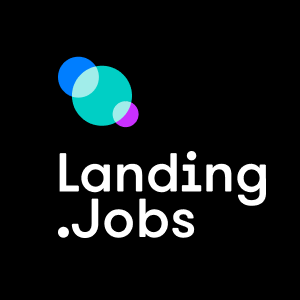UX/UI design is being heavily influenced by the emergence of AI, its chatbots and AI personal assistants. In the past few years, we’ve seen the rise of many AI Tools, like ChatGPT or DeepSeek. And because of this, the users who will begin to tailor your website experience may not be human.
With recent advances in AI, the way people find and use services is changing. Soon, instead of consumers searching for information on one of the many platforms available online, a personal AI agent will analyse all available data and present the most optimised solution in a fraction of the time it would take a human.
This scenario raises a crucial question for designers and UX professionals: Will we stop creating experiences for people and start designing for robots? Or is there a way to balance the two worlds, creating experiences that are both readable by AI and emotionally resonant for humans?
From searching to asking
For decades, browsing the web meant opening tabs, clicking on links, and sorting and curating the information found. It was this process of exploration that led us to discover or learn something. A search for the best products or services could take hours. That was the online experience until now.
With the integration of AI personal assistants or agents into browsers, this logic is changing. Users no longer need to browse the web; they can simply ask one of these agents. Instead of dozens of links, they receive a direct answer. It’s fast, efficient, and eliminates much of the noise previously encountered. But it raises the critical question we have mentioned: what do we lose when we trade manual search for an instant answer?
Suppose the web ceases to be a space for exploration and becomes merely a repository of information. In that case, we risk creating poorer, more predictable, and even boring digital experiences. For designers and creators, this means that the big challenge now is to preserve the human experience on the internet, which encourages people to get involved.
Websites for humans and machines
Until now, website design has been primarily designed for people. Visual structures, information hierarchies, interactivity, and emotion guided the experience. But in this new reality, websites also need to be readable by AI. This changes the logic of design: the experience must be both enjoyable for humans and intelligible for AI agents. In practice, this means:
- Creating well-written and well-structured content.
- Ensuring that data is consistent and accessible, for example, through endpoints or documentation that agents can interpret.
- Working with clarity and simplicity, without complex layouts that are overly dependent on animations that confuse algorithms.
However, there’s still an associated risk: we may start to create websites that are mere databases for AI, cold and lacking emotional experience. So, the primary concern of designers is still the balance of speaking to AI personal assistants or agents while still moving humans.
From SEO to AIO
For years, the main goal of any online business was to master SEO: to appear at the top of Google searches, for example. Now, when a user asks an AI assistant a question, it does not show them a list of links, but rather provides a ready answer with concise results. And it does not always cite the source of the information.
This means that it is no longer enough to be first in search results. You need to ensure that the information on your website is collected, understood, and used by AI. This gives rise to the concept of AIO (AI Optimisation), which requires:
- Producing factual, clear, and easily summarisable content.
- Keeping information up to date and reliable.
- Structure data so that it can be interpreted without ambiguity.
- Building reputation and authority so that AI recognises you as a reliable source.
So, the question remains: how can you optimise experiences for machines without losing relevance for humans? The answer lies in thinking about both audiences simultaneously and realising that, nowadays, if AI can’t read your website, users may never find it.
Hallucinations, bias and advertising
The promise of AI is efficiency, but its threat is trust. AI assistants can give quick answers, but they are not always correct. These are called hallucinations when AI invents facts or distorts information. In addition to hallucinations, there is also a growing concern about data bias, like when training data is not necessarily representative of the real world or the target population.
And, inevitably, there is the commercial side. As with search engines and social networks, AI-powered browsers are also beginning to explore the personalisation of advertisements based on user data. This can transform the expected neutrality into an experience conditioned by commercial interests.
For designers and creators, this means that the concern is also ethical. How can we build experiences that inspire trust, promote diversity, and prevent the web from being reduced to a set of predictable responses? The future of digital design will depend on the ability to balance clarity for machines with authenticity for people.
A new world of website creation
The future of design won’t be a choice between humans and robots. However, this future involves the ability to bridge the two, where structured data and technical efficiency coexist with emotion, storytelling, and trust.
Designers will need to learn how to master this dual approach, optimising experiences for AI agents without losing the human connection. After all, even in a world of algorithms, the final decision still needs to make sense to those on the other side of the screen.
Are we ready to design for humans and for robots?






0 Comments